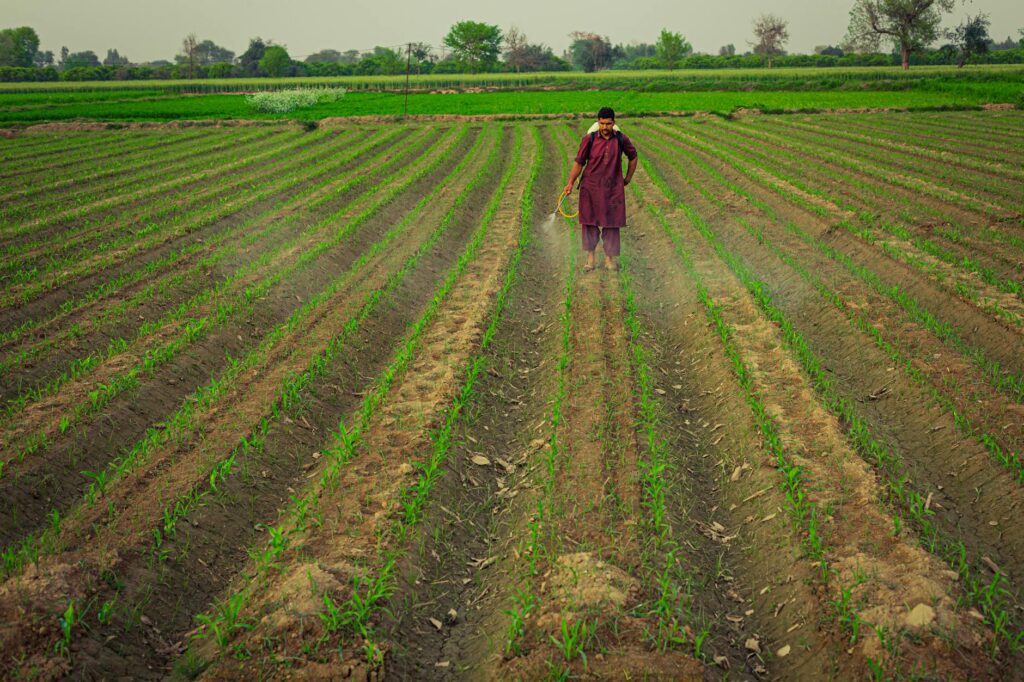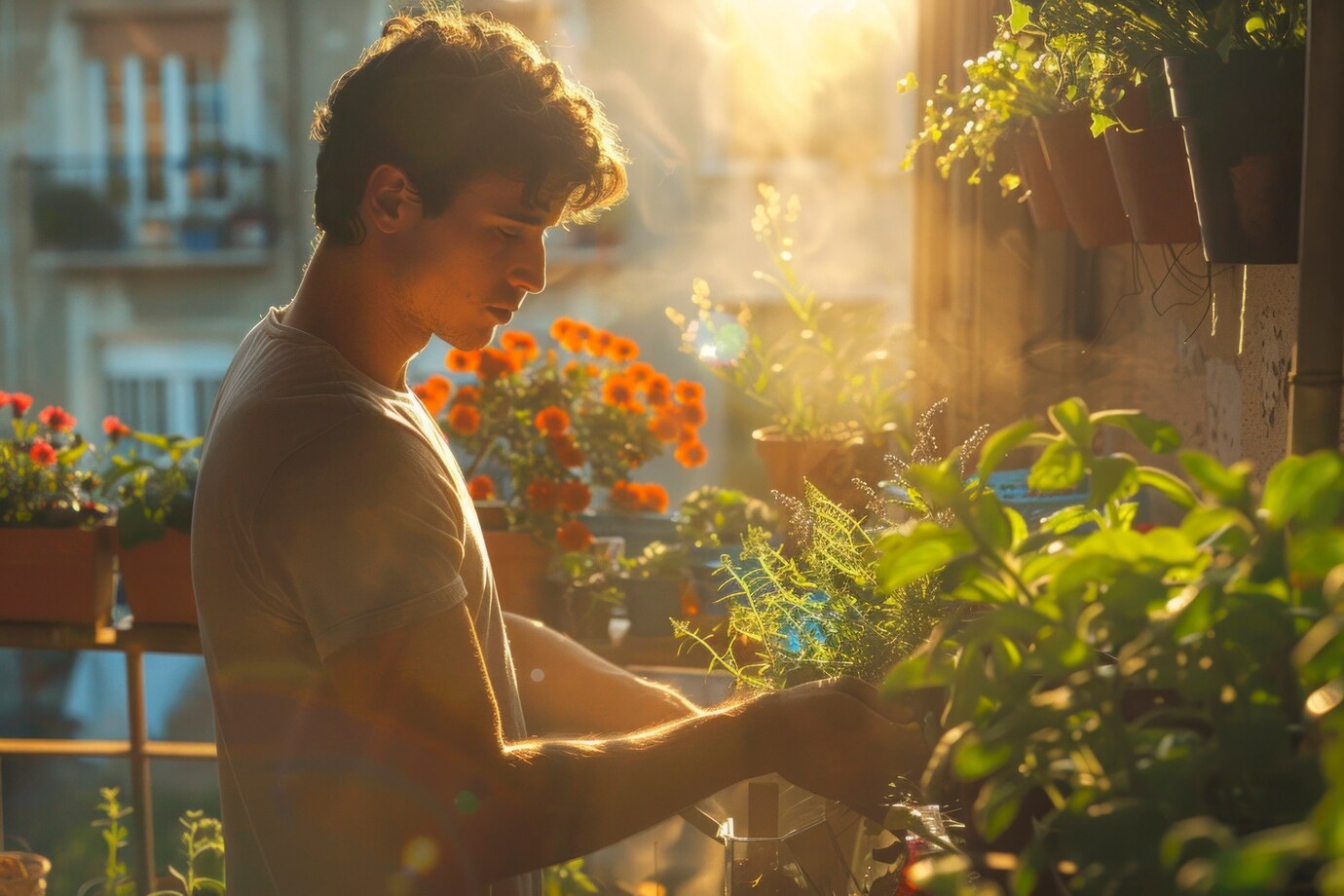🌱 Are your plants looking a little… meh? You water them, you talk to them, you even play them Mozart, but they still seem to be struggling. Don’t worry, you’re not alone! Many plant parents unknowingly make common mistakes that can hinder their green friends from thriving.
Here’s the thing: plants are like silent roommates with very specific needs. They can’t tell you when something’s wrong, but they sure can show it. From droopy leaves to stunted growth, your plants are constantly communicating with you. But are you listening? 🤔
In this blog post, we’ll uncover the top 10 mistakes that might be sabotaging your plant parenting journey. From lighting faux pas to watering woes, we’ll explore the crucial environmental factors you might be overlooking. So, grab your gardening gloves, and let’s dive in to transform your space into a lush, thriving oasis! 🌿💚+ Add Section
Table of Contents
Overlooking Proper Lighting Conditions

Understanding natural light requirements
Different plants have varying light requirements, which can be categorized into three main groups:
- Low-light plants
- Medium-light plants
- High-light plants
Understanding these categories is crucial for providing optimal growing conditions:
| Light Category | Examples | Daily Light Needs |
|---|---|---|
| Low-light | Snake plant, ZZ plant | 2-4 hours |
| Medium-light | Pothos, Philodendron | 4-6 hours |
| High-light | Succulents, Fiddle leaf fig | 6+ hours |
Signs of insufficient light
Recognizing light deficiency symptoms helps in adjusting plant placement:
- Leggy or stretched growth
- Smaller leaves
- Pale or yellowing foliage
- Slow growth or dormancy
- Leaf drop
Choosing the right artificial lighting
When natural light is insufficient, artificial lighting can supplement:
- LED grow lights: Energy-efficient and customizable
- Fluorescent lights: Affordable and suitable for most houseplants
- Incandescent bulbs: Less efficient but provide warmth
Rotating plants for even light exposure
To ensure uniform growth:
- Rotate plants 1/4 turn weekly
- Observe growth patterns and adjust accordingly
- Consider using a plant turntable for larger specimens
Now that we’ve covered proper lighting, let’s explore another crucial aspect of plant care: watering techniques.+ Add Section
Neglecting Proper Watering Techniques

A. Recognizing signs of overwatering
Overwatering is a common mistake that can lead to serious plant health issues. Here are some key signs to watch out for:
- Yellowing leaves
- Wilting despite moist soil
- Mold or fungus growth on soil surface
- Foul odor from the soil
- Stunted growth or leaf drop
B. Identifying underwatering symptoms
Underwatering can be just as detrimental as overwatering. Look for these symptoms:
- Dry, crispy leaf edges
- Drooping or curling leaves
- Slow growth or no new growth
- Soil pulling away from the pot edges
C. Implementing a consistent watering schedule
A consistent watering schedule is crucial for plant health. Consider these factors:
| Factor | Importance |
|---|---|
| Plant type | Different species have varying water needs |
| Season | Adjust frequency based on growth cycles |
| Pot size | Larger pots retain moisture longer |
| Environmental conditions | Temperature and humidity affect water needs |
D. Using the right water type for your plants
Not all water is created equal when it comes to plant care. Here’s a quick guide:
- Tap water: Let it sit for 24 hours to allow chlorine to evaporate
- Rainwater: Ideal for most plants, rich in nutrients
- Filtered water: Good option if tap water is hard or contains chemicals
- Distilled water: Best for sensitive plants or those prone to mineral buildup
Now that we’ve covered proper watering techniques, let’s explore another crucial aspect of plant care: soil quality and composition.+ Add Section
Ignoring Soil Quality and Composition

Selecting appropriate soil for different plant types
Choosing the right soil is crucial for plant health. Different plants have varying soil requirements:
| Plant Type | Ideal Soil Composition |
|---|---|
| Succulents | Well-draining, sandy mix |
| Tropical Plants | Rich, moisture-retentive soil |
| Herbs | Loamy, well-draining soil |
| Vegetables | Nutrient-rich, organic soil |
Importance of soil pH balance
Soil pH significantly affects nutrient availability. Most plants thrive in slightly acidic to neutral soil (pH 6.0-7.0). Use a pH testing kit to monitor your soil and adjust as needed:
- Add lime to increase pH (make soil more alkaline)
- Add sulfur to decrease pH (make soil more acidic)
Benefits of regular soil aeration
Aeration improves soil structure and promotes healthy root growth. Benefits include:
- Enhanced water absorption
- Improved nutrient uptake
- Increased oxygen flow to roots
- Prevention of soil compaction
Incorporating organic matter for nutrient-rich soil
Organic matter enriches soil and supports plant health. Add compost, well-rotted manure, or leaf mold to:
- Improve soil structure
- Enhance water retention
- Boost beneficial microbial activity
- Provide slow-release nutrients
Regular soil maintenance ensures your plants have the best foundation for growth. By addressing soil quality and composition, you’re setting the stage for thriving, healthy plants in your indoor or outdoor garden.+ Add Section
Disregarding Humidity Levels

Understanding humidity requirements for various plants
Different plants have varying humidity needs based on their native habitats. Here’s a quick guide to humidity requirements for common houseplants:
| Plant Type | Humidity Level |
|---|---|
| Tropical | 60-80% |
| Succulents | 30-50% |
| Ferns | 70-90% |
| Cacti | 20-40% |
Understanding these requirements is crucial for maintaining healthy plants. Tropical plants like orchids and monstera thrive in high humidity, while desert plants prefer drier conditions.
Creating a microclimate with proper humidity
To create an ideal microclimate for your plants:
- Group plants with similar humidity needs together
- Use humidity trays filled with pebbles and water
- Mist plants regularly, especially those requiring high humidity
- Place plants in naturally humid areas like bathrooms or kitchens
Using humidifiers and pebble trays effectively
Humidifiers are excellent tools for maintaining consistent humidity levels. Place them near your plants, but avoid direct misting to prevent fungal growth. Pebble trays offer a natural way to increase humidity:
- Fill a tray with pebbles and water
- Place the plant pot on top, ensuring it doesn’t touch the water
- As the water evaporates, it creates a humid microclimate around the plant
By addressing humidity needs, you’ll create a thriving environment for your plants. Next, we’ll explore the importance of maintaining proper temperature control for optimal plant growth.+ Add Section
Identifying optimal temperature ranges for different plants
Different plants thrive in various temperature ranges, and understanding these requirements is crucial for their health. Here’s a quick guide to optimal temperature ranges for common plant categories:
| Plant Category | Optimal Temperature Range |
|---|---|
| Tropical | 65°F – 80°F (18°C – 27°C) |
| Succulents | 70°F – 80°F (21°C – 27°C) |
| Cacti | 70°F – 80°F (21°C – 27°C) |
| Orchids | 60°F – 75°F (16°C – 24°C) |
| Herbs | 65°F – 70°F (18°C – 21°C) |
| Ferns | 60°F – 72°F (16°C – 22°C) |
Protecting plants from drafts and sudden temperature changes
To shield your plants from harmful drafts and temperature fluctuations:
- Keep plants away from air conditioning vents and radiators
- Use draft stoppers or weather stripping on windows and doors
- Consider using a thermometer to monitor temperature changes
- Move sensitive plants away from frequently opened doors or windows
Environment Needs for Healthy Plants
Managing seasonal temperature fluctuations
As seasons change, adjust your plant care routine:
- In winter:
- Move plants away from cold windows
- Use grow lights to compensate for shorter days
- Consider a humidifier to combat dry indoor air
- In summer:
- Provide shade for sun-sensitive plants
- Increase watering frequency
- Use fans to improve air circulation
Remember, maintaining consistent temperatures is key to healthy plant growth. Monitor your plants regularly and adjust their environment as needed to ensure they thrive year-round.+ Add Section
Neglecting Regular Fertilization

Choosing the right fertilizer for your plants
Selecting the appropriate fertilizer is crucial for your plants’ health. Consider the following factors:
- Plant type (flowering, foliage, edible)
- Growth stage (seedling, mature, flowering)
- Nutrient requirements (N-P-K ratio)
| Plant Type | Recommended N-P-K Ratio |
|---|---|
| Leafy | High N (e.g., 3-1-2) |
| Flowering | High P (e.g., 1-3-1) |
| Fruiting | Balanced (e.g., 5-5-5) |
Establishing a proper fertilization schedule
Consistency is key when it comes to fertilization. Create a schedule based on:
- Plant growth rate
- Season
- Type of fertilizer (slow-release vs. liquid)
Typically, fertilize every 2-4 weeks during the growing season, reducing frequency in winter.
Recognizing signs of over-fertilization
Be vigilant for symptoms of excessive fertilization:
- Leaf burn or yellowing
- Stunted growth
- Wilting despite adequate water
- Salt crust on soil surface
Importance of seasonal adjustments in fertilization
As seasons change, so should your fertilization routine:
- Spring: Increase frequency as growth accelerates
- Summer: Maintain regular schedule
- Fall: Reduce frequency as growth slows
- Winter: Minimal or no fertilization for dormant plants
Remember, fertilization is just one aspect of plant care. Combine it with proper watering techniques and optimal lighting for truly healthy plants.+ Add Section
Understanding plant growth patterns
Plant growth patterns are crucial for creating a healthy environment for your green companions. Different plants have unique growth habits, which can be broadly categorized into:
- Vertical growth (e.g., trees, columnar plants)
- Horizontal spread (e.g., vines, groundcovers)
- Bushy or compact growth (e.g., shrubs, herbs)
- Rosette formation (e.g., succulents, some leafy vegetables)
Understanding these patterns helps in:
- Selecting appropriate containers
- Arranging plants effectively
- Planning for future growth
| Growth Pattern | Examples | Spacing Considerations |
|---|---|---|
| Vertical | Bamboo, Dracaena | Allow vertical space, minimal horizontal |
| Horizontal | Pothos, English Ivy | Provide trellises or hanging baskets |
| Bushy | Ficus, Monstera | Allow ample space in all directions |
| Rosette | Aloe, Echeveria | Group closely, but avoid overcrowding |
Avoiding overcrowding and its consequences
Overcrowding plants can lead to various issues that hinder their health and growth:
- Reduced air circulation
- Increased competition for nutrients
- Higher risk of pest infestations
- Stunted growth due to light competition
To avoid these problems, ensure proper spacing between plants based on their mature size. This practice promotes healthy growth and reduces the risk of disease transmission.
Proper pruning techniques for healthy growth
Pruning is essential for maintaining proper plant spacing and encouraging healthy growth. Key pruning techniques include:
- Pinching: Remove growing tips to promote bushier growth
- Thinning: Remove entire branches to improve air circulation
- Heading back: Cut branches to a specific length to control size
- Root pruning: Trim roots to control plant size and encourage new growth
Regular pruning helps manage plant size, shape, and overall health, ensuring optimal spacing and a thriving indoor garden.+ Add Section
Ignoring Pest and Disease Management

Identifying common plant pests and diseases
To maintain a healthy plant environment, it’s crucial to recognize the signs of common pests and diseases. Here’s a quick reference guide:
| Pest/Disease | Signs |
|---|---|
| Aphids | Sticky leaves, curled foliage |
| Spider mites | Fine webbing, stippled leaves |
| Fungal infections | Powdery mildew, leaf spots |
| Root rot | Wilting, yellowing leaves |
Implementing preventive measures
Proactive pest management is key to maintaining healthy plants. Consider these preventive strategies:
- Regular inspection of leaves, stems, and soil
- Proper watering techniques to prevent fungal growth
- Adequate air circulation between plants
- Using sterile potting soil and clean tools
Natural and chemical treatment options
When pests or diseases strike, you have several treatment options:
- Natural remedies:
- Neem oil spray for various pests
- Insecticidal soap for soft-bodied insects
- Diatomaceous earth for crawling pests
- Chemical treatments:
- Systemic insecticides for severe infestations
- Fungicides for persistent fungal issues
Quarantine procedures for new plants
Introducing new plants can pose risks to your existing collection. Implement these quarantine measures:
- Isolate new plants for 2-4 weeks
- Inspect thoroughly for signs of pests or diseases
- Treat preventively with neem oil or insecticidal soap
- Gradually introduce to other plants if no issues arise
By following these pest and disease management strategies, you’ll significantly reduce the risk of infestations and maintain a thriving plant environment. Remember, early detection and prompt action are crucial in preventing the spread of pests and diseases among your plants.+ Add Section
Failing to Provide Adequate Support Structures

A. Recognizing plants that require support
Many plants benefit from support structures, especially those with climbing or vining habits. Here’s a list of common plants that often need support:
- Tomatoes
- Peas
- Beans
- Cucumbers
- Morning glories
- Clematis
- Honeysuckle
- Ivy
B. Choosing appropriate support materials
Selecting the right support material is crucial for your plants’ health and aesthetic appeal. Consider these options:
| Material | Pros | Cons |
|---|---|---|
| Wood stakes | Natural look, affordable | May rot over time |
| Bamboo poles | Lightweight, eco-friendly | Can split or crack |
| Metal trellises | Durable, stylish | Can be expensive |
| Plastic netting | Flexible, easy to install | Less visually appealing |
C. Proper staking and tying techniques
To ensure your plants receive adequate support without damage:
- Install supports early in the growing season
- Use soft, flexible ties (e.g., plant velcro or twine)
- Leave room for stem growth when tying
- Adjust ties regularly as plants grow
By providing proper support, you’ll encourage healthy growth and prevent damage from wind or the weight of fruits and flowers. Next, we’ll explore the importance of regular plant maintenance in keeping your green friends thriving.+ Add Section
Neglecting Regular Plant Maintenance
Importance of routine inspections
Regular plant inspections are crucial for maintaining healthy, thriving plants. By conducting routine check-ups, you can catch potential issues early and prevent them from becoming major problems. Here’s a simple inspection checklist:
- Leaf color and texture
- Stem firmness
- Soil moisture
- Root health
- Signs of pests or diseases
| Inspection Frequency | Plant Type |
|---|---|
| Weekly | Delicate or fast-growing plants |
| Bi-weekly | Most indoor plants |
| Monthly | Slow-growing or hardy plants |
Proper cleaning and dusting of leaves
Clean, dust-free leaves are essential for optimal photosynthesis and plant health. Regularly wiping leaves with a damp cloth helps remove dust and debris, allowing plants to breathe and absorb light more effectively.
Timely repotting for optimal growth
As plants grow, they may outgrow their current containers. Signs that it’s time to repot include:
- Roots growing out of drainage holes
- Water running straight through the pot
- Stunted growth
- Soil drying out quickly
Pruning and deadheading for plant health
Pruning and deadheading are vital maintenance tasks that promote healthy growth and appearance. Removing dead or yellowing leaves, spent flowers, and overgrown branches helps redirect energy to new growth and prevents disease spread.
Now that we’ve covered the importance of regular plant maintenance, let’s explore how to provide adequate support structures for your plants.+ Add Section
Conclusion
Providing the right environment for your plants is crucial for their health and growth. By avoiding these top 10 mistakes, you can create an optimal setting for your green companions to thrive. From ensuring proper lighting and watering techniques to maintaining soil quality and managing pests, each aspect plays a vital role in nurturing healthy plants.
Remember, successful plant care is an ongoing process that requires attention and dedication. By addressing these common oversights and implementing proper care routines, you’ll be well on your way to cultivating a vibrant and flourishing garden or indoor plant collection. Take the time to understand your plants’ specific needs and create an environment that supports their growth – your efforts will be rewarded with lush, beautiful, and thriving plants.

